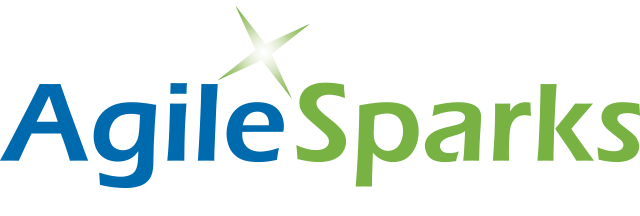
“Our time-to-value has gone down using the SAFe® process. If reaching production would normally take 1½ years, now it could be eight months with the new processes and approach.”
—Hrishikesh Karekar, Lead Agile Coach, Amdocs
Challenge:
Long scoping and development times failed to keep pace with the rate of change happening within Amdocs’ client organizations.
Industry:
Software, Telecommunications
Results:
- More frequent deliveries to production
- 30% faster delivery for user acceptance testing
- Monthly demos to customers, enabling early feedback and better alignment with customer expectations
- System stabilization time down from six weeks to less than a week
Best Practices:
- Follow SAFe Closely—Instead of modifying the approach for the company, Amdocs chose to follow the Scaled Agile Framework as closely as possible.
- Leverage Gamification—Gamification, and early successes, motivated teams to push on and commit to the change.
The partner that made it happen:

Introduction
In the complex and competitive communications industry, many of the world’s largest telecom and entertainment players turn to Amdocs for customer care, billing and order management systems. At the $3.6 billion company, more than 24,000 employees serve customers in over 90 countries.

The Amdocs portfolio includes a full set of BSS/OSS capabilities on a variety of platforms and technologies to support communication service providers. Projects can take anywhere from a few months to a few years to complete, requiring close collaboration across widely distributed teams. The Amdocs Delivery organization comprises approximately 5,000 professionals around the world.
In this challenging environment, Amdocs sought ways to improve quality and delivery times. The time from initial scoping to delivery simply stretched too long for the rate of change happening for Amdocs’ customers. Amdocs Delivery had been experimenting with ways to be Agile; however the need for a more structured approach was evident given projects’ scale and complexity.
“We were working in big blocks,” says Levana Barkai, a Lead of Center of Excellence in the Amdocs Israeli office. “Even scoping requirements with the customer could take a year. Only after we closed in on the bits and bytes of customer requirements (long phase of ~8 months) we started the next phases of design, development and testing. But then we would realize that the customer already has new requirements we needed to address. We needed to be more flexible to customers’ changing needs.”
Choosing a Proven, Enterprise-Level Framework
After evaluating several options to scale Agile, Amdocs Delivery decided to adopt the Scaled Agile Framework® (SAFe®) for a number of reasons. For one, the Framework offered a proven, public-facing method of applying Lean and Agile practices at an enterprise level. The Framework also offered the level of detail the company needed to truly roll out the practices at every level of the organization, and to do so quickly.
In late 2014, executives, managers and leaders began SAFe certification training, followed by teams. As they began applying Agile practices to real projects, the Delivery Transformation team, comprised of Agile Coaches, guided the SAFe implementation and execution. Unlike previous efforts at applying Agile methods, this time the company took a more disciplined approach to more closely align the implementation to the framework to reap the benefits of industry learnings.
Barkai said, “This time we’re doing it differently. We’re taking industry best practices and not modifying them for Amdocs. We set the expectation that we are implementing SAFe as is.”
Upping Adoption through Gamification
Gamification played a big role in the change management strategy, especially to drive the adoption of new practices at the Team level. One of the successful gamification techniques included “FLIP,” a game that requires teams to check items off a checklist to ensure Scrum ceremonies are done in the true spirit. Teams earn points based on how quickly they complete the checklists.
FLIP stands for:
Finish–The team finished the current iteration fully
Learn–Teams performed a retrospective to learn for the future
Improve–The retrospective resulted in specific items that teams can focus on to improve in the next iteration
Plan–Teams completed the iteration planning ceremony and are ready to begin execution for the next iteration

As teams “FLIP-ed,” they took selfie photos and posted them on physical boards with their marked checklists. Only the teams themselves checked whether criteria were really achieved—to prevent the game from being perceived as a monitoring tool.
The FLIP game drove several successful outcomes:
- Deeper understanding–To win, teams had to review the checklist, encouraging them to delve into the details of the process broadening the number of people with a detailed understanding of the new process.
- More discipline–More teams began following Scrum in a disciplined way, helping Amdocs Delivery achieve the new status quo much faster.
“Using gamification for Scrum adoption resulted in better outcomes,” says Hrishikesh Karekar, Lead Agile Coach. “It helped us boost motivation, better the engagement and drive positive behavioral change in teams. Most important of all, the teams loved the process and had fun.”
Delighted Customers
Team members also found reward in seeing the new process produce customer satisfaction and real results. After initial hesitance to share early and frequent demos with customers, team members were pleasantly surprised by customer reactions.
“Customers were really delighted,” Barkai says. “They have been giving us great feedback about seeing the system in such an early state. Now teams understand that this is the key to success.”
“We reduced the time to take an idea to production,” adds Karekar. “Our time to value has gone down using the SAFe process. If reaching production would normally take 1½ years, now it could be eight months with the new processes and approach.”
On average, the company has quantified delivery for user acceptance testing 30 percent faster—a major indication of value for Amdocs. Demos take place every two weeks to two months, instead of the previous four months at a minimum.
Likewise, system stabilization time has shortened in step with quality improvements, from six weeks to less than a week. And with more stability comes greater predictability in the early stages.
Next Steps
Word has spread quickly about early teams’ success, with many initiatives now running on SAFe. And management is encouraging company-wide rollout of the Framework, a goal coaches expect to reach by early next year.
“It’s not theory anymore,” Barkai says. “Now we have a lot of evidence that SAFe works. The success with SAFe implementation has generated a lot of interest in raising the bar for excellence, and laid a great foundation for the DevOps journey.”
Share:
Back to: All Case Studies
Suggested Case Study: Telstra